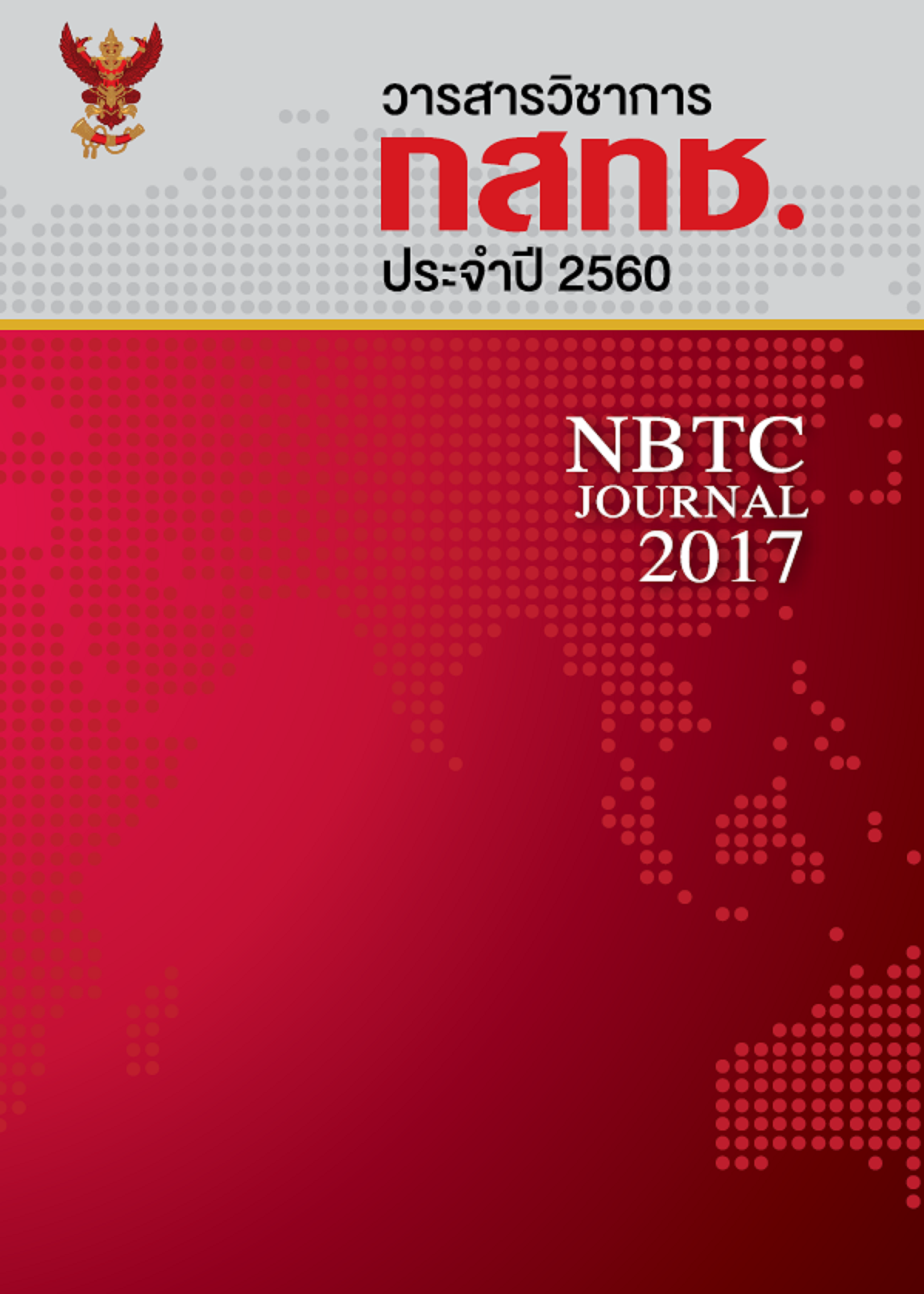Television Regulation for Diversity
Keywords:
Television program diversity, Television regulation, Structure regulation, Content regulation, Television regulation for diversityAbstract
This article surveys the definition of television diversity, television regulation and how to promote diversity in television. Television regulation takes these forms: structure regulation and content regulation. To promote diversity, structural regulation of television must address these issues: diversity in types of operation, diversity in ownership patterns of television, diversity in source of income of television, diversity in broadcast areas and promotion of independent producer. To promote content diversity, these measures are necessary: regulation of target group of audience, and program objective, varieties of program format and content orientation, local content and diversity of viewpoint.
References
ThaiPBS. (2560). ความเป็นมา. เข้าถึงข้อมูลเมื่อวันที่ 12 กันยายน พ.ศ.2560 จาก
https://org.thaipbs.or.th/organization/history
พระราชบัญญัติการประกอบกิจการกระจายเสียง และกิจการโทรทัศน์ พ.ศ.2551
พิรงรอง รามสูต. (2556). การกำกับดูแลเนื้อหาอินเตอร์เน็ต. กรุงเทพฯ: โรงพิมพ์แห่งจุฬาลงกรณ์.
ประกาศคณะกรรมการกิจการกระจายเสียง กิจการโทรทัศน์ และกิจการโทรคมนาคมแห่งชาติ เรื่อง หลักเกณฑ์ วิธีการ และเงื่อนไข
การประมูลคลื่นความถี่เพื่อให้บริการโทรทัศน์ในระบบดิจิตอล ประเภทบริการทางธุรกิจระดับชาติ พ.ศ.2556
อิทธิพล วรานุศุภากุล. (2558). การกำกับดูแลสื่อภาพยนตร์ของไทย. วารสารวิชาการนวัตกรรมสื่อสารสังคม, 2(2), 36-46.
อิทธิพล วรานุศุภากุล และพิรงรอง รามสูตร. (2560). ความหลากหลายของรูปแบบรายการโทรทัศน์ของสถานีโทรทัศน์ระบบ
อนาล็อก ก่อนและหลังการกำเนิดของโทรทัศน์ระบบดิจิตอล. วารสารนิเทศศาสตร์ธุรกิจบัณฑิตย์, 11(1), 273-308.
Abramson, B.D. (2001). Media policy after regulation? International journal of cultural studies. Vol.4(3), pp 301-326.
ACMA. (2017). Australian TV content. Retrieved April 15, 2017, from https://www.acma.gov.au/Industry/Broadcast/
Television/Australian-content/australian-content-television
ACMA. (2017b). All about children’s television. Retrieved April 15, 2017, from https://www.acma.gov.au/Citizen/TV-
Radio/Television/Kids-and-TV/all-about-childrens-television-kids-tv-advertising-i-acma
Baran, S.J. and Davis, D.K. (2009). Mass Communication Theory (5th Edition). MA: Wadsworth.
DCA. (2017). Updating Australia's media laws. Department of Communications and the Arts, Australian
Government. Retrieved April 14, 2017, from https://www.communications.gov.au/what-we do/television/
commercial-tv
DCMS. (2012). DCMS Submission: Narrative on Media Ownership. Retrieved January 23, 2017, from
https://webarchive.nationalarchives.gov.uk/20140122145147/https:/www.levesoninquiry.org.uk/wp-
content/uploads/2012/07/DCMS-submission_Narrative-on-media-ownership.pdf
Doyle,G. & Paterson, R. (2008). Public Policy and Independent Television Production In the UK. Journal of Media
Business Studies, 5(3), 17-33.
FCC. (2016a). How to Apply for a Radio or Television Broadcast Station. Retrieved December 15, 2016, from
https://www.fcc.gov/media/radio/how-to-apply
FCC. (2016b). Children’s Educational Television. Retrieved December 15, 2016, from https://transition.fcc.gov/
cgb/consumerfacts/childtv.pdf
Freedman, D. (2008). The Politics of Media Policy. Cambridge: Polity Press.
Goldfarb, C.B. (2008). The FCC's broadcast media ownership rules. Retrieved December 15, 2016, from
https://fpc.state.gov/documents/organization/103691.pdf
Hans-Bredow-Institut. (2006). Final Study on Co-Regulation Measures in the Media Sector. Retrieved May 25, 2015,
from https://ec.europa.eu/avpolicy/docs/library/studies/coregul/final_rep_en.pdf
Hitchens, L. (2006). Broadcasting pluralism and diversity: A comparative study of policy and regulation. Bloomsbury
Publishing.
Napoli, P. M. (1999). Deconstructing the diversity principle. Journal of Communication, 49(4), 7-34.
Ofcom. (2005). Review of television production sector. Retrieved February 11, 2017, from
https://www.ofcom.org.uk/__data/assets/pdf_file/0023/51278/tpsr.pdf
Ofcom. (2009). Media ownership rules review. Retrieved January 30, 2017, from https://www.ofcom.org.uk/
consultations-and-statements/category-2/morr
Ruane K.A. (2011). Fairness Doctrine: History and Constitutional Issues. Retrieved March 6, 2016, from
https://fas.org/sgp/crs/misc/R40009.pdf
Seibert, F. et al. (1956). Four Theories of the Press. Chicago: University of Illinois Press.
Downloads
Published
How to Cite
Issue
Section
License
The Office of the NBTC holds the copyright of articles appearing in the journal. The Office of the NBTC allows the public or individuals to distribute, copy, or republish the work under a Creative Commons license (CC), with attribution (BY), No Derivatives (ND) and NonCommercial (NC); unless written permission is received from the Office of the NBTC.
Text, tables, and figures that appear in articles accepted for publication in this journal are personal opinion and responsibility of the author, and not binding on the NBTC and the Office of the NBTC. In case of errors, each author is solely responsible for their own article, and not concerning the NBTC and the NBTC Office in any way.



